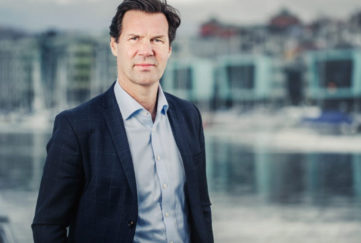Lerøy Q3 hit by ISA issues

The Lerøy Seafood group is lowering its fish farming production forecasts for this year following a series of illness issues at some of its sites in Norway.
Presenting its third quarter results today the group, which is part owner of Scottish Sea Farms, unveiled an 8% higher turnover at NOK 8,001m (£591m) but an operational EBIT (operational profit) that was NOK 202 million (almost £15m) lower than a year ago.
The EBIT emerged at NOK 631 million (£46.7m) against NOK 833 million (£61.7m) 12 months ago.
Lerøy is a combined seafood group comprising fish farming, deep sea trawling and fish processing.
The company said that in farming its earnings were affected by “one time effects related to the early harvest of fish with ISA [infectious salmon anaemia] detection”
The company continued: “In Wild Catch, the quotas for 2023 are lower than in 2022, affecting earnings negatively. Downstream activities, VAPS&D [Value Added Products, Sales & Distribution], delivered significantly better earnings than the same quarter last year.
“At the end of the third quarter and the beginning of the fourth quarter, we have faced challenges at some sites resulting in lower production than expected.
“This affects the expected (fish farming) harvest volume in 2023 and 2024. For 2024, we now expect a harvest volume of approximately 193,500 GWT, including jointly controlled operations,” said CEO Henning Beltestad.
He added: “To achieve our goals in farming for 2025, we have implemented a range of measures where the focus on increased smolt quality, investments in new technology, and the implementation of Lerøy Way are crucial.
“We have great confidence in these measures, and their effects are expected to gradually become apparent in the form of higher growth in through 2024.
“Compared to the level in the third quarter, release from stock costs in Farming in the fourth quarter are expected to be at the same level,” he said.
Harvest volumes, including jointly controlled operations, are expected to be 169,500 GWT in 2023 and 193,500 GWT in 2024.”
A lower quota has affected earnings in the Wild Catch division but downstream activities are showing improvement, he went on.
“Historically, demand for seafood has held up relatively well in economic downturns. We find that our value chain meets the market’s needs, and Lerøy is well-positioned for the future,” Beltestad concluded.

